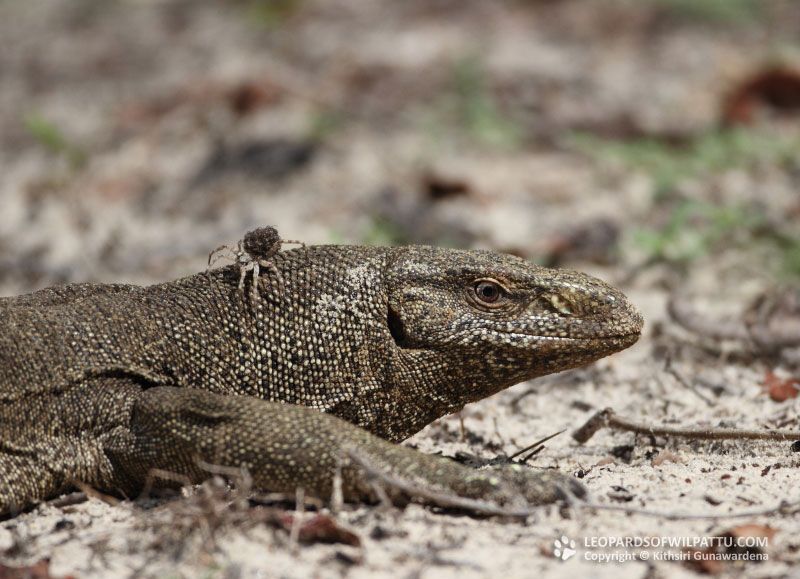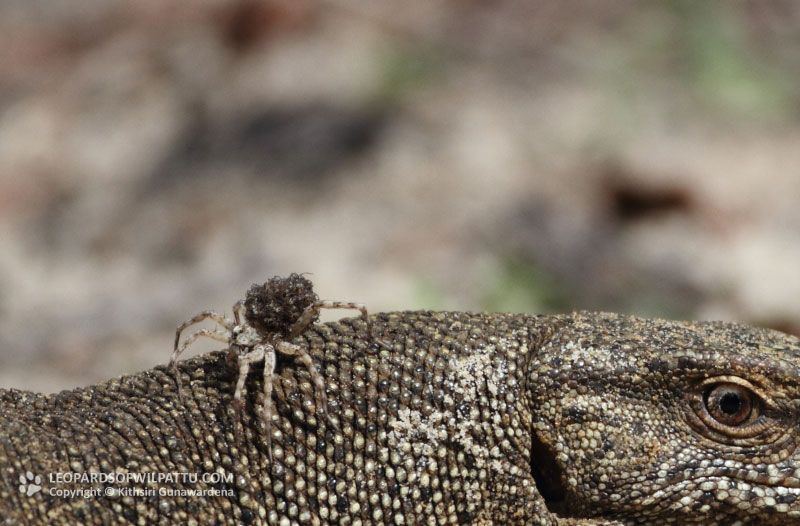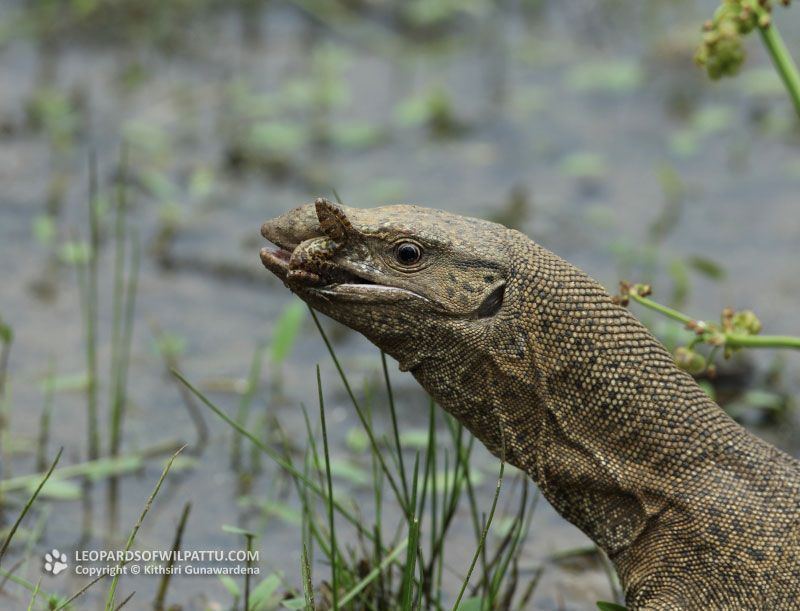
Reptiles ‹‹ Go Back
This species is widely distributed in South Asia. Other than in Sri Lanka it is found in Iran, Afghanistan, Pakistan, India, Nepal, Bangladesh and Burma. The conservation status of this species is regarded as “Least Concerned” (National Red List 2012) and it is a species protected under the Fauna and Flora Protection Ordinance as amended by Act No. 22 of 2009.
This is a species that is found throughout the country ascending the hills up to an altitude of about 500 meters. I have observed this monitor throughout the lowlands in the wet and dry zones of the country including Jaffna peninsula and the Mannar Island. The highest altitude at which I have recorded this species is the Knuckles forest reserve at an altitude of 620 meters. It is still found in and around the city of Colombo as well.
In Wilpattu this is the most commonly seen reptile, often along the roads or sunbathing in open areas. Even though they are mostly seen on the ground these lizards are very good at climbing trees and have an extremely strong grip once they move in to any crevice or a termite hill.
In June 2013, at Kanjuran Villu, while photographing some wild flowers my attention was drawn to one of these lizards at the waters edge. It moved very slowly and suddenly lunged forward and seized a small Skipper Frog that was partly submerged in water. The reptile held the unfortunate frog for a minute or so between its jaws and swallowed it thereafter. In December 2012, as depicted in the photos above, I came across a large land monitor out in the open at Kudapatessa around midday with a spider on its head. On closer examination through the binoculars I found that this spider was in fact carrying its entire brood also on its back. On a few occasions while walking both in the dry zone as well as the wet zone jungles I have come across spiders on the forest floor carrying their eggs as well as the tiny offspring on their backs. The baby spiders hitching a ride on its parents back will cling on to this cramped up space and are disciplined enough not to get off until they reach the desired age. The Land Monitors on the other hand are known to prey on all species of spiders whenever they can catch them. Thus I was quite puzzled as to how this little spider (species yet to be identified) came to rest on its predator’s head. Its life and those of its young family hanging in the balance as one careless move can lead to certain death. The spider did not move about much and it was apparent that so long as it remained on its head the monitor was also not able to reach it. Perhaps the spider got on to the reptile by mistake prior to it becoming active during the early hours of the morning and has remained since then or it may have been a more dramatic reason such as a failed attempt by the monitor to prey on the spider, which resulted in this position. However, it was quite apparent that this tiny animal with its pin-sized brain had strategically figured out the best position be in during this awkward situation in order to save its life and those of its family.



